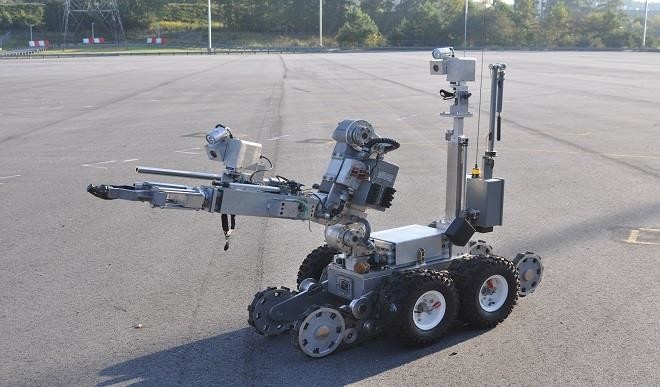Device that can sniff out suicide bomber underway
Suicide bombing may soon come to an end across the world if a device currently being developed by researchers sees the light of the day. More than 50 people were killed in the northern Nigerian cities of Kano and Yola last week by suicide bombers believed to be members of the outlawed Boko Haram group. […]


Suicide bombing may soon come to an end across the world if a device currently being developed by researchers sees the light of the day.
More than 50 people were killed in the northern Nigerian cities of Kano and Yola last week by suicide bombers believed to be members of the outlawed Boko Haram group.
But the U.S. military is presently working on improving Standoff Suicide Bomber Detection System (SSBDS) which can detect concealed bombs and suicide vests such as those used in the tragic Paris attacks from more than a football field away.
An earlier version of the multi-sensor technology was used in Afghanistan in 2012 according to Defense One.
The device is ‘limited by physics,’ so it can’t be designed as a handheld tool, but has the potential to be incorporated into the architecture of high-traffic public buildings, like train stations or stadiums.
The SSBDS meaures midwave and longwave radiation, as well as the terahertz wavelentgh, through multiple sensors.
The device shows images through different views: black and white infrared, bright orange terahertz, and standard.
Abnormalities, like a concealed bomb in a suicide vest, show up on the sensor as dark spots of negative space, or holes where there should have been orange or white.
To improve the device, developers are looking to incorporate hyperspectral imaging, which will cut down on false positives and increase the detection range.
The SSBDS incorporates a multitude of sensors, which measure midwave and longwave infrared radiation, and the terahertz wavelength.
It is low energy and isn’t ionizing, making it less dangerous than an X-ray, and also contains a visible-light camera.
Researchers of the Joint Improvised-Threat Defeat Agency (JIDA) first developed the system to protect troops on forward operating bases.
Increasing instances of terrorist attacks in civilian areas now necessitates these kinds of devices outside of a military setting.
“It’s a perfect system for dual use with Department of Homeland Security. Just think of Paris,” a JIDA scientist told Defense One.
The SSBDS stands at around three feet tall and offers three views when directed toward a person: a black and white infrared view, bright orange terahertz view, and a regular picture.
If a person is hiding an explosive underneath clothing, the abnormality will appear as a hole, a dark area of negative space where there should be white or orange.
“We can take different materials, such as your jacket, my jacket, her shirt. Although they’re very similar in material makeup they actually have their own unique signature, just like a fingerprint,” says another scientist.
The system is operated by trained personnel to locate the dark spots on the sensor, but trials in Afghanistan revealed that sunlight can interfere with the terahertz sensor.
Researchers are now working on making it more precise by integrating a new, cutting-edge sensor for hyperspectral imaging. Developers are waiting on research-and-development money before this can be incorporated.
Hyperspectral imaging would increase the range and limit the number of false positives detected by the device, and, it would allow operators to potentially identify the presence of explosives, not just dark spots.
At its current stage in development, an SSBDS is expensive; a system could be more than a million dollars, but the price could drop as the device becomes more commercial.
